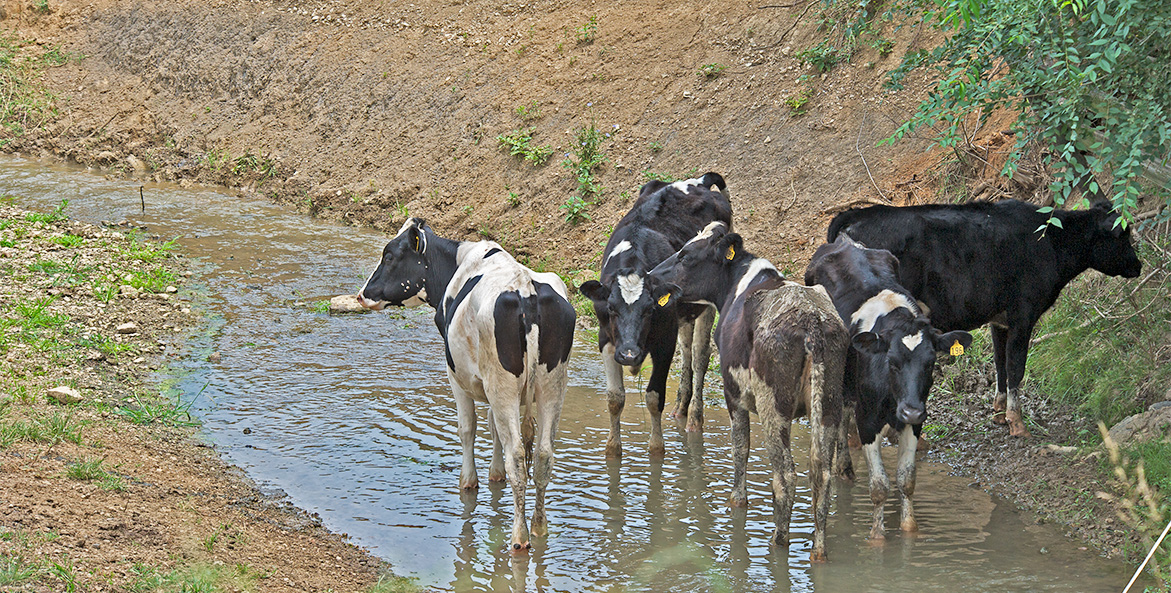The following was first published in the Virginian Mercury.
What small step should Virginia take now to create healthier rivers and streams for future generations? Legislators could launch a new pilot program that pays farmers based on how much cleaner they leave nearby waterways.
Such a pay-for-outcomes program would foster a new way of thinking that drives progress in farm conservation at a time when it's needed most.
Farmers have long helped protect land and water. But there's a problem: Efforts to reduce pollution to waterways from agriculture in the Chesapeake Bay watershed have been much slower than expected.
For years, Virginia's Agricultural Cost-Share Program has provided financial and technical support to farmers, who apply for assistance for approved practices that prevent polluted runoff. Virginia and other states in the Chesapeake Bay watershed have worked together with the Federal government and partners to restore the Bay. Much of this effort has focused on reducing nitrogen, phosphorus, and sediment pollution from agriculture, stormwater, and wastewater.
But Virginia is likely to miss its Chesapeake Bay restoration commitments by a 2025 deadline, and 90% of the remaining pollution reductions must come from agriculture.
Farmers, with the help of Virginia's agricultural cost-share program, are implementing projects that lead to cleaner water. These are validated by computer modeling that estimates how much pollution each project reduces. But models have limitations.
Notably, nobody follows up to measure how much pollution is actually reduced in local waterways. To optimize anything, you need real-world feedback.
That's how a new approach could support Virginia's existing program.
This effort, called the Virginia Clean Water Outcomes Fund, would use water quality testing and other performance metrics both before and after project installation to measure benefits. Payments to farmers would be linked to how much pollution a project reduces in a nearby waterway—no matter what the practice is. The more pollution cut, the bigger the payment.
Farmers know what's best for their land and their business and are excellent problem solvers. Just like many different decisions influence crop yield, the same can be said for conservation work.
Yet Virginia's current agricultural cost-share program only pays for a limited range of projects already supported by computer models, including longstanding practices such as planting buffers of trees along waterways and fencing livestock out of streams.
More flexibility under a pay-for-outcomes program would incentivize promising new approaches not currently eligible for funding.
For example, innovative technology for capturing ammonia from poultry houses to use as fertilizer could lead to cleaner water and improve the health of chicken flocks.
Newly available GPS collars for sheep and cattle create virtual fences that prevent them from muddying waterways while saving farmers from installing and maintaining long stretches of fencing.
Experimenting with incentives can also lead to a profound increase in implementation of time-honored practices.
Consider the practice of establishing buffers of trees along streams and rivers, one of the most effective ways to reduce pollution to waterways. This is a top priority for state programs, yet Virginia has only implemented 12% of forested buffer restoration goals that need to be met by 2025, with limited progress since 2010, according to EPA Chesapeake Bay Program data.
Since 2019, a local effort called the James River Buffer Program has planted about as many acres of forested buffers in the James River watershed as all federal and state programs combined.
It's been so successful because of a simple but critical modification: the program takes care of planting, weeding and maintenance of the trees for the first three years, leaving little for the landowner to worry about. The current state program only covers planting, not maintenance work. A new pay-for-outcomes effort could adapt to the needs of the farmer.
Finally, the location of a conservation measure has huge implications for water quality. A pay-for-outcomes program would create clear incentives that funnel funding toward rivers and streams where pollution loads are highest. Our current framework has limited capacity to focus on these areas.
A pay-for-outcomes effort would complement Virginia's existing agricultural cost-share program, showing which approaches are most effective to optimize state investments.
Here's how it would work:
- Farmers would apply for funding linked to measurable outcomes, such as reducing nitrogen and phosphorus pollution in a nearby stream.
- The farmer would then choose a project and spend an initial batch of funding to install it.
- Regular testing of the stream both before and after project installation would measure improvements in water quality.
- Additional payments to the farmer would be based on how much pollution is reduced. Farmers could profit from the program so long as results are achieved.
This market-based approach would incentivize new technology and creativity while focusing on the most concentrated sources of nitrogen and phosphorus pollution. As projects show varying degrees of success, the program would provide clear evidence of what works.
To make an even bigger difference on a local waterway, farmers could join together as a watershed coalition in partnership with technical experts from Soil and Water Conservation districts. Together they could apply for payments to create major benefits in the nearby waterway.
Farm conservation work has many challenges, but also many solutions. Now is the time to embrace innovation and flexibility, verify how much pollution projects reduce, and focus efforts where they have the greatest benefit.
Let's give farmers tools and incentives to optimize the use of state funding. This upcoming legislative session, Virginia's elected officials should launch a pay-for-outcomes farm conservation program.




